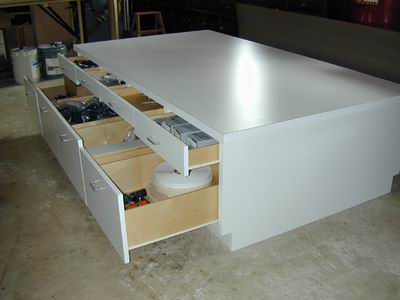Q.
I just purchased a powerfeed to run a batch of rough aspen into half inch t&g. I have never used one before and know nothing about set up for one. I have not been able to find any literature on them, either. Any help would be appriciated.
A.
The VERY FIRST thing to do is call Western Roller and get the tires replaced. If you have the dull yellowish tires on the feeder they will cause you more grief than you'll care to deal with. Western Roller will have a standard tire that fits your feeder. You will also have to buy the wheels for them, a one time deal. After that you'll just have to replace the tires as they wear.
As far as the operation of the feeder, it needs to be bolted solid to the bed of the machine you're using it on, and it needs to be level. That means equal pressure on all the tires. The feeder also needs to be "angled" slightly into the fence, so that as it feeds it always "pushes" the material towards the fence. It doesn't take much, maybe just a 1/16" to an 1/8" closer to the fence on the outfeed side than the infeed side.
When you operate the feeder make sure ALL joints are TIGHT. This is where I had some problems when I first started. Something would come loose as I was machining, the feeder would walk and it's ugly. In the event that does happen just know what you're going to do and keep it in the back of your mind, shut off the feeder, then the saw/shaper/whatever.
Brian Personett, forum technical advisor
Brian Personett, forum technical advisor
It should be noted the the softer the duro or hardness, the quicker the roller will wear. When I work on new power feeders, I use the rollers provided at first. Since there are many manufacturers of power feeders, the quality of the rollers varies greatly. If the roller does not work then I look for other options. Western Roller Corp is one of many sources. They normally have in stock the rollers you need.
Dave Rankin, forum technical advisor
Brian Personett, forum technical advisor
